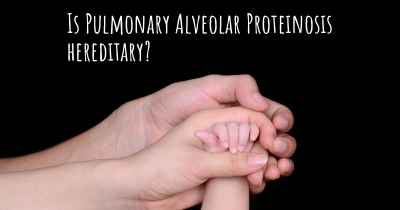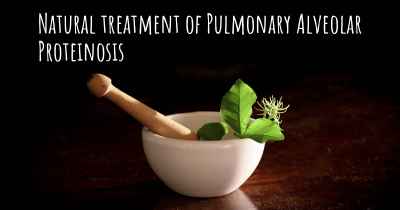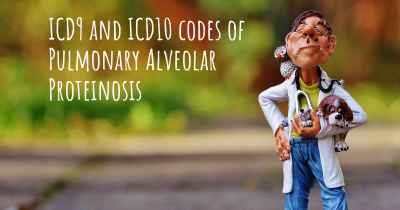Can people with Pulmonary Alveolar Proteinosis work? What kind of work can they perform?
See how people with experience in Pulmonary Alveolar Proteinosis give their opinion about whether people with Pulmonary Alveolar Proteinosis can work and what kind of jobs are more appropriated for people with Pulmonary Alveolar Proteinosis

Can people with Pulmonary Alveolar Proteinosis work?
Pulmonary Alveolar Proteinosis (PAP) is a rare lung disease characterized by the accumulation of abnormal proteins and lipids in the alveoli, the tiny air sacs in the lungs. This condition can cause breathing difficulties, coughing, fatigue, and other respiratory symptoms. While PAP can significantly impact a person's quality of life, it does not necessarily mean that individuals with this condition are unable to work.
Workability and Employment Considerations:
The ability of individuals with PAP to work largely depends on the severity of their symptoms, the progression of the disease, and the specific demands of their occupation. Some individuals with mild or well-managed PAP may be able to continue working without significant limitations, while others with more severe forms of the disease may face challenges in maintaining employment.
Factors influencing workability:
- Symptom control: Effective management of PAP symptoms through treatments such as whole lung lavage, inhaled medications, or immunosuppressive therapy can improve a person's ability to work.
- Physical limitations: Severe respiratory symptoms may limit physical exertion and endurance, making certain physically demanding jobs difficult to perform.
- Work environment: The work environment plays a crucial role in determining workability. Individuals with PAP may need to avoid exposure to respiratory irritants, pollutants, or infectious agents that could exacerbate their symptoms.
- Flexibility and accommodations: Employers who are willing to provide reasonable accommodations, such as modified work schedules, ergonomic adjustments, or telecommuting options, can greatly support individuals with PAP in maintaining employment.
- Individual circumstances: Each person's experience with PAP is unique, and factors such as overall health, disease progression, and comorbidities can influence workability. It is important for individuals with PAP to consult with their healthcare team to assess their specific situation.
Types of work suitable for individuals with PAP:
While certain physically demanding occupations may pose challenges for individuals with PAP, there are various types of work that can be more suitable:
- Sedentary or desk-based jobs: Office-based roles that involve administrative tasks, data entry, customer service, writing, or computer programming can be well-suited for individuals with PAP.
- Remote or telecommuting jobs: With the increasing availability of remote work opportunities, individuals with PAP can explore jobs that allow them to work from home, minimizing exposure to potential respiratory triggers.
- Consulting or freelance work: Individuals with PAP can consider working as consultants or freelancers in their area of expertise, providing services on a project basis or working independently.
- Education and research: Opportunities in the field of education, research, or academia, such as teaching, tutoring, or conducting research, can be suitable for individuals with PAP.
- Artistic or creative pursuits: Individuals with PAP can explore artistic endeavors, such as writing, painting, photography, or music, which can be pursued at their own pace and in environments that are conducive to their health.
Conclusion:
While the impact of Pulmonary Alveolar Proteinosis on an individual's ability to work can vary, many people with this condition can continue to be productive members of the workforce. The severity of symptoms, disease management, work environment, and individual circumstances all play a role in determining workability. It is important for individuals with PAP to work closely with their healthcare team and employers to find suitable accommodations and make informed decisions regarding their employment.








